
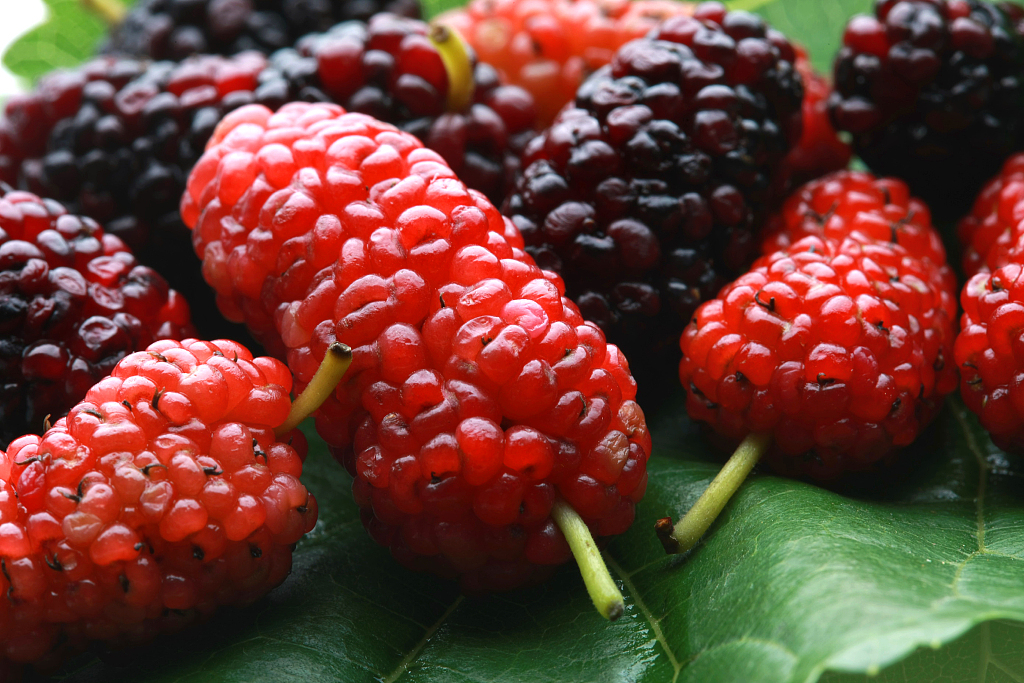
Large and juicy mulberries are the perfect choice to eat with yogurt. /VCG Photo
Mulberries are a common fruit that you can buy in a nearby supermarket, but what you don't know is that it was actually originated in China. What's even more curious is that mulberry, as a type of fruit, is not that popular in China.
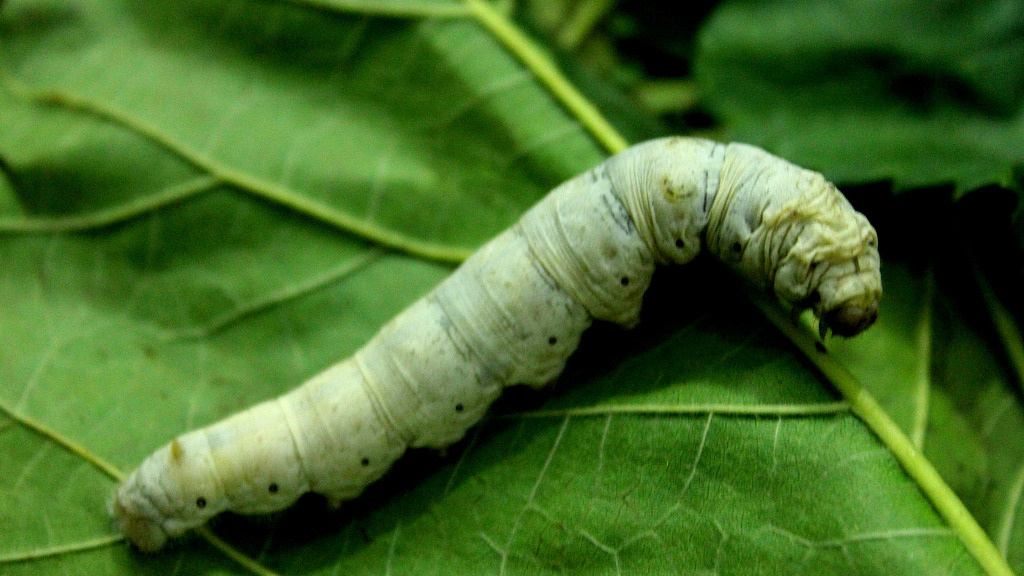
A silkworm enjoying mulberry leaves. /VCG Photo
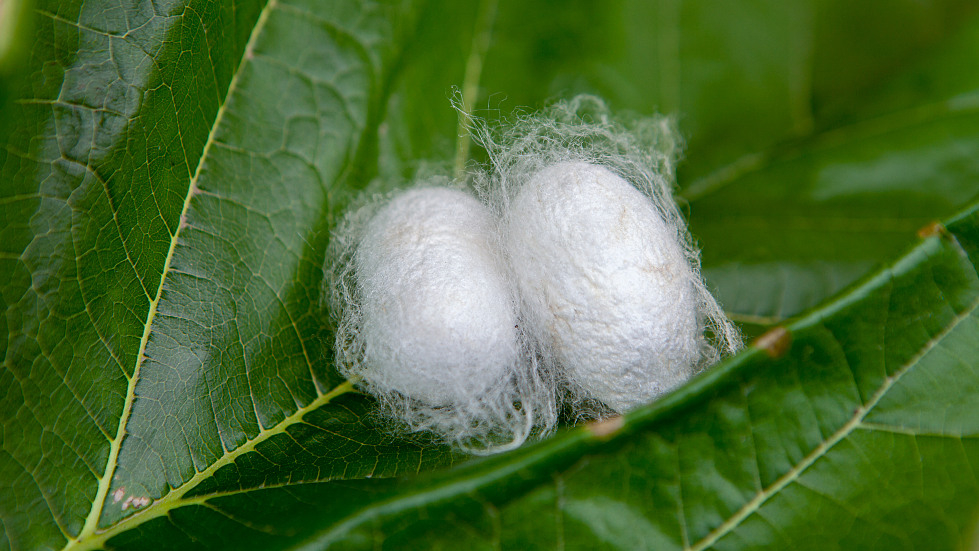
Silkworms cocoons on mulberry leaves. /VCG Photo
For thousands of years, the cultivation of mulberry trees prevailed in China. However, it was mainly for the leaves instead of the fruit. The leaves were, and still are, a crucial part in silkworm breeding. The earliest evidence shows that Shanxi Province, where the Yellow River culture was originated, was the first known place where people cultivated mulberry trees for sericulture.
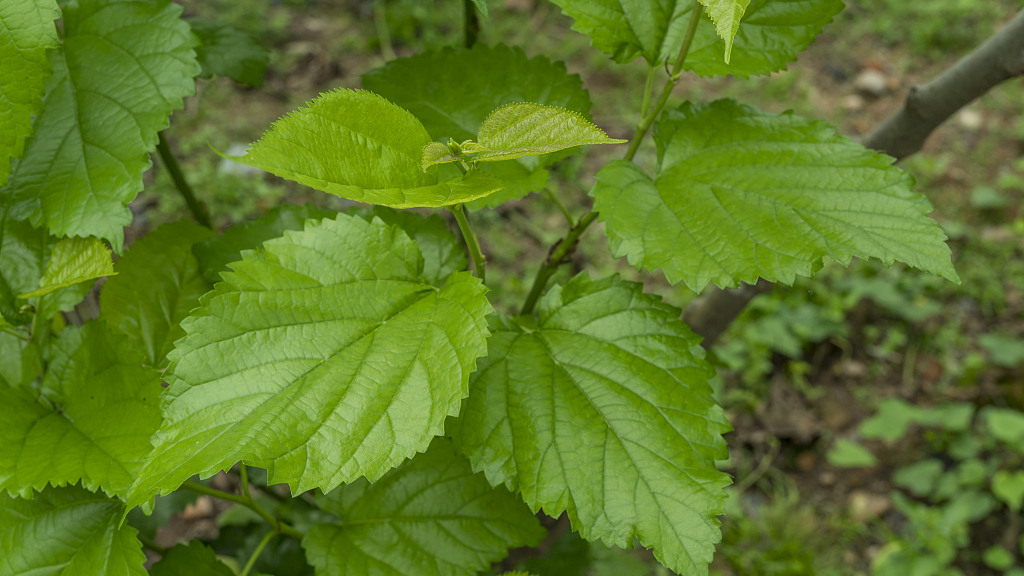
Mulberry leaves have serrated margins. /VCG Photo
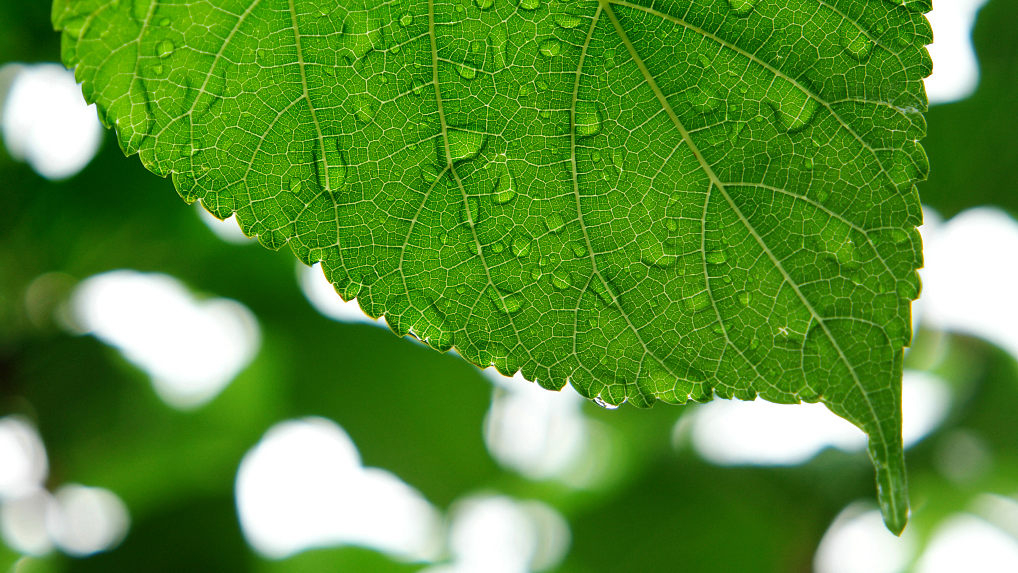
Close up of a mulberry leaf. /VCG Photo
Mulberry leaves play an important role in childhood memories of many Chinese. That's because elementary education incorporates "feeding silkworms" as an experimental part of the science classes in primary schools. Therefore, many Chinese had experienced the process of looking for mulberry leaves to feed their little silkworms and observing them slowly turn into cocoons.
Mulberry trees are usually around ten meters high. The fruiting period goes from May until August.
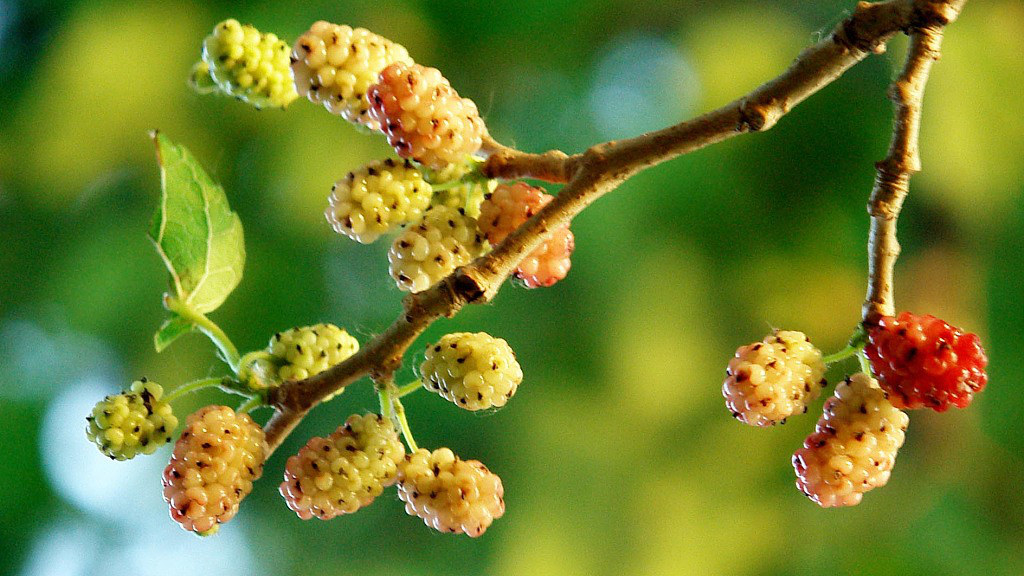
Newly grown mulberries. /VCG Photo
Apart from the economical use, mulberry trees also play an important role in ancient Chinese culture.
In ancient China, people liked to plant mulberry trees around their houses. The tender branches can be used for making bowls and other small furniture. Therefore, in ancient poems "mulberry tree" represents home.
China's Flora Tour
From the wetlands along the coast to the dense rain forests hidden in the southwest of China, all boast an array of plant species. In this series, we will go on a tour to learn about some of the most iconic flora in different provinces and see how they live in harmony with the local climate and topography.
(Cover image designed by CGTN's Du Chenxin.)
(If you want to contribute and have specific expertise, please contact us at nature@cgtn.com)

Copyright © 2018 CGTN. Beijing ICP prepared NO.16065310-3
Copyright © 2018 CGTN. Beijing ICP prepared NO.16065310-3